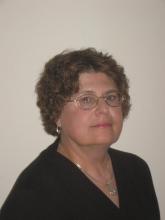Teaching the Art of Practicing: Professional Reading Program

Seminar leader: Patricia Kershaw, NCTM
If you’ve ever wanted to get more out of your practice, or wondered how to teach your students to practice more effectively, the 2015-16 Professional Reading Program will guide your way. The following list of books covers this topic in a thorough and enlightening manner.
Reading list:
1. The Practice of Practice by Jonathan Harnum (Sol Ut Press)
This very enjoyable read dispels old myths about good practicing habits, covers practice tips from famous musicians, and offers outlines for effective practice. It also explores the brain science involved in efficient practice.
2. The Musician’s Way by Gerald Klickstein (Oxford University Press)
This volume gives practice tips, again from famous musicians, includes a section on wellness in both practice and performance, and provides hints on practicing for performance.
3. Practicing the Piano by Nancy O’Neill Breth (Hal Leonard Publications)
This book contains the “how to” of practice. Ms. O’Neill Breth’s ideas and tips cover everything from organizing practice time to 75 different ways to practice sections of a piece. This is a handy guide for every music teacher’s studio, one that I find myself referring to on a regular basis.
Supplemental reading:
1. The Piano Student’s Guide to Effective Practicing by Nancy O’Neill Breth (Hal Leonard)
2. The Parent’s Guide to Effective Practicing by Nancy O’Neill Breth (Hal Leonard)
Both of these folios are extremely useful guides for your students and parents to keep close to the piano.
3. The Practice Revolution by Phillip Johnson (PracticeSpot Press)
These books are hands-on materials. You can use the principles immediately in your own practice sessions and in teaching your students better practice habits. Therefore, instead of a series of questions about each of the books, I’m going to ask you to do four tasks:
1. Start a practice journal for yourselves (suggested in all three books). As you read the books write down which techniques from the books you would like to try and use them in your own practice sessions. Analyze how well the techniques work for you.
2. Work with the brain and wellness studies in practice materials to overhaul your own practice organization, times, and techniques. Record your results in your journal.
3. Start a studio practice journal for your students. Again, log which techniques your students tried and how well they worked. Keep track of the music selections in which you tried the techniques. For example, if you assigned a student to try technique #20 in the Guide to Effective Practicing for the first 8 measures of Fur Elise and it didn’t increase the accuracy of their eighth-note rhythm, either it was the wrong technique to use in this musical case, it doesn’t work for that particular student, or the student practiced the technique incorrectly. You may want to try the same technique again after carefully analyzing why it didn’t work, or try a different tack on the problem, maybe #42–rhythms #1 and 2.
4. If your local organization has time to set aside 5 to 10 minutes during each meeting for a discussion on teaching techniques, maybe this year’s topic could be some of the practice techniques included in these volumes.
Personally, this is my year to experiment with changing up my practice routine and how I teach my students to practice. I’ve already started by splitting up my practice sessions and am using some of Nancy O’Neill Breth’s guidelines. I am recording the results in my practice journal. Although I’ve used the Guide to Effective Practicing with my students for several years, I am now recording how well the different techniques work and in which sections of pieces the students can most effectively use certain techniques. I hope you’ll all join me on this practice journey, and I look forward to comparing notes with many of you at Conference next year.
Patricia Kershaw, NCTM teaches piano and French horn in Highlands Ranch, Colorado. She is a member of South Suburban Music Teachers Association and a past board member of CSMTA and SSMTA. In addition to teaching, Patricia is principal horn with the Evergreen Chamber Orchestra, plays chamber music on horn and piano with that organization, and performs with the South Suburban Piano Quartet Ensemble.
